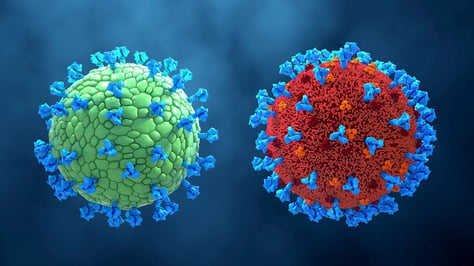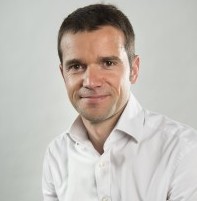Virus-like particles (VLPs) are nanostructures consisting of assembled virus proteins that lack viral genetic material and, therefore, are non-infectious. Their interest relies in the possibility of using them to carry and deliver drugs, vaccines or imaging substances.
They can be produced in diverse in vivo systems, including bacteria, insects, plants and mammals, and also in cell-free systems. In fact, cell-free systems have already proven to synthesize functional VLPs, presenting several advantages over in vivo systems. First, cell-free systems allow to simultaneously translate multiple mRNAs, facilitating the production of active complexes comprising a number of different subunits. Second, the cell-free technology is particularly beneficial when the optimum assembly conditions are difficult to establish in vivo, namely when non-physiological ionic strength, pH, and/or redox potential are required [1]. Third, production and stability of VLPs depend on the formation of disulfide bonds, which can be performed and controlled in cell-free systems by adjusting the redox potential of the reaction [2,3]. Finally, higher yields are obtained using cell-free systems when the viral proteins are cytotoxic or insoluble in vivo [4].

Several examples can be found in literature, illustrating the advantageous production of VLPs by cell-free systems. The MS2 bacteriophage coat protein VLP (MS2 VLP) and a C-terminally truncated hepatitis B core protein VLP (HBV VLP) were produced in an Escherichia coli-based cell-free system, reporting for the first time the use of a prokaryote-based cell-free system to produce efficiently assembled VLPs [5]. Production and assembly yields were higher than the best previously published yields (assembly efficiency for both the MS2 VLP and the HBV VLP produced from 30 µl and 1 ml CFPS reactions was ≥ 80%, resulting in assembled VLP yields between 356 and 442 µg/ml). In addition, the proposed cell-free system showed potential to scale up.
A way to accelerate and optimize VLP production...
In another work, two capsid proteins of human norovirus (HuNoV) VLPs (VP1 from HuNoV genotype GII.3 (VP1-GII.3) and genotype GII.4 (VP1-GII.4)) were synthesized using an E. coli-based cell-free system [6]. Both proteins presented the correct molecular mass and assembled into VLPs with the accurate size and morphology. The obtained yields were comparable to the ones achieved using a Pichia pastoris cell-based system, but with the advantage of a production time of 4 h, versus the >50 h production time of cell-based systems, besides being more cost-effective.
Cell-free protein synthesis (CFPS) systems can also enable functionalization of VLPs’ surface, by using Cu(I) catalysed click chemistry, allowing the direct conjugation of azide- and alkyne-containing proteins (including an antibody fragment and the granulocyte-macrophage colony stimulating factor), nucleic acids and polyethylene glycol chains to the VLP surface [7]. The reported direct attachment procedure permitted to conjugate three different ligands to the VLPs in a single step, and enabled control of the relative ratios and surface abundance of the attached species.
From different cell-free systems
An eukaryotic cell-free expression system was used to produce the encephalomyocarditis virus from a plasmid DNA or a PCR product [8]. The system employed a HeLa cell extract supplemented with T7 RNA polymerase and the virus was produced within 4 h with high efficiency. Furthermore, the system did not require the synthesis or purification of RNA to produce the viral particles in vitro, which is an advantage for the production of viral particles. A cell-free expression system was also developed for the production of poliovirus [9].
Rabbit reticulocyte lysate cell-free systems have enabled the expression and assembly of HIV Gag polyprotein [10] and hepatitis C virus capsid [11]. A yeast-based cell-free system has also shown to be effective in the expression of human papillomavirus 58 (HPV58) L1 protein and assembly of VLPs from the mentioned capsid protein [12].
In conclusion, CFPS technology has demonstrated to be a valuable and even advantageous alternative to cell-based systems for the production of VLPs. Cell-free production of VLPs can be performed using extracts from diverse cell sources and a wide-range of VLP structures can be efficiently synthesized, showing the high versatility of CFPS.
With more than 11 years of experience in the cell-free technoloy, Synthelis' team can help you if you want to test VLPs production using a cell-free system. Please contact us if you have such project !

References:
[1] Ceres P., Zlotnick A. 2002. Weak protein-protein interactions are sufficient to drive assembly of hepatitis B virus capsids. Biochemistry 41:11525-11531.
https://doi.org/10.1021/bi0261645
[2] Bundy B.C., Swartz J.R. 2011. Efficient disulfide bond formation in virus-like particles. J. Biotechnol. 154:230-239. https://doi.org/10.1016/j.jbiotec.2011.04.011
[3] Kim D., Swartz J.R. 2004. Efficient production of a bioactive, multiple disulfide-bonded protein using modified extracts of Escherichia coli. Biotechnol. Bioeng. 85:122-129.
https://doi.org/10.1002/bit.10865
[4] Stiege W., Erdmann V.A. 1995. The potentials of the in vitro protein biosynthesis system. J. Biotechnol. 41:81-90. https://doi.org/10.1016/0168-1656(95)00005-B
[5] Bundy B.C., Franciszkowicz M.J., Swartz J.R. 2008. Escherichia coli-based cell-free synthesis of virus-like particles. Biotechnol. Bioeng. 100:28-37.
https://doi.org/10.1002/bit.21716
[6] Sheng J., Lei S., Yuan L., Feng X. 2017. Cell-free protein synthesis of norovirus virus-like particles. RSC Adv. 7:28837.
https://doi.org/10.1039/c7ra03742b
[7] Patel K.G., Swartz J.R. 2011. Surface functionalization of virus-like particles by direct conjugation using azide−alkyne click chemistry. Bioconjug. Chem. 22:376-387.
https://doi.org/10.1021/bc100367u
[8] Kobayashi T., Nakamura Y., Mikami S., Masutani M., Machida K., Imataka H. 2012. Synthesis of encephalomyocarditis virus in a cell-free system: from DNA to RNA virus in one tube. Biotechnol. Lett. 34:67-73.
https://doi.org/10.1007/s10529-011-0744-z
[9] Franco D., Pathak H.B., Cameron C.E., Rombaut B., Wimmer E., Paul A.V. 2005. Stimulation of poliovirus synthesis in a HeLa cell-free in vitro translation-RNA replication system by viral protein 3CDpro. J. Virol. 79:6358-6367.
https://doi.org/10.1128/JVI.79.10.6358-6367.2005
[10] Spearman P., Ratner L. 1996. Human immunodeficiency virus type 1 capsid formation in reticulocyte lysates. J. Virol. 70:8187-8194.
[11] Klein K.C., Polyak S.J., Lingappa J.R. 2004. Unique features of hepatitis C virus capsid formation revealed by de novo cell-free assembly. J. Virol. 78:9257-9269.
https://doi.org/10.1128/JVI.78.17.9257-9269.2004
[12] Wang X., Liu J., Zheng Y., Li J., Wang H., Zhou Y., Qi M., Yu H., Tang W., Zhao W.M. 2008. An optimized yeast cell-free system: sufficient for translation of human papillomavirus 58 L1 mRNA and assembly of virus-like particles. J. Biosci. Bioeng. 106:8-15. https://doi.org/10.1263/jbb.106.8




